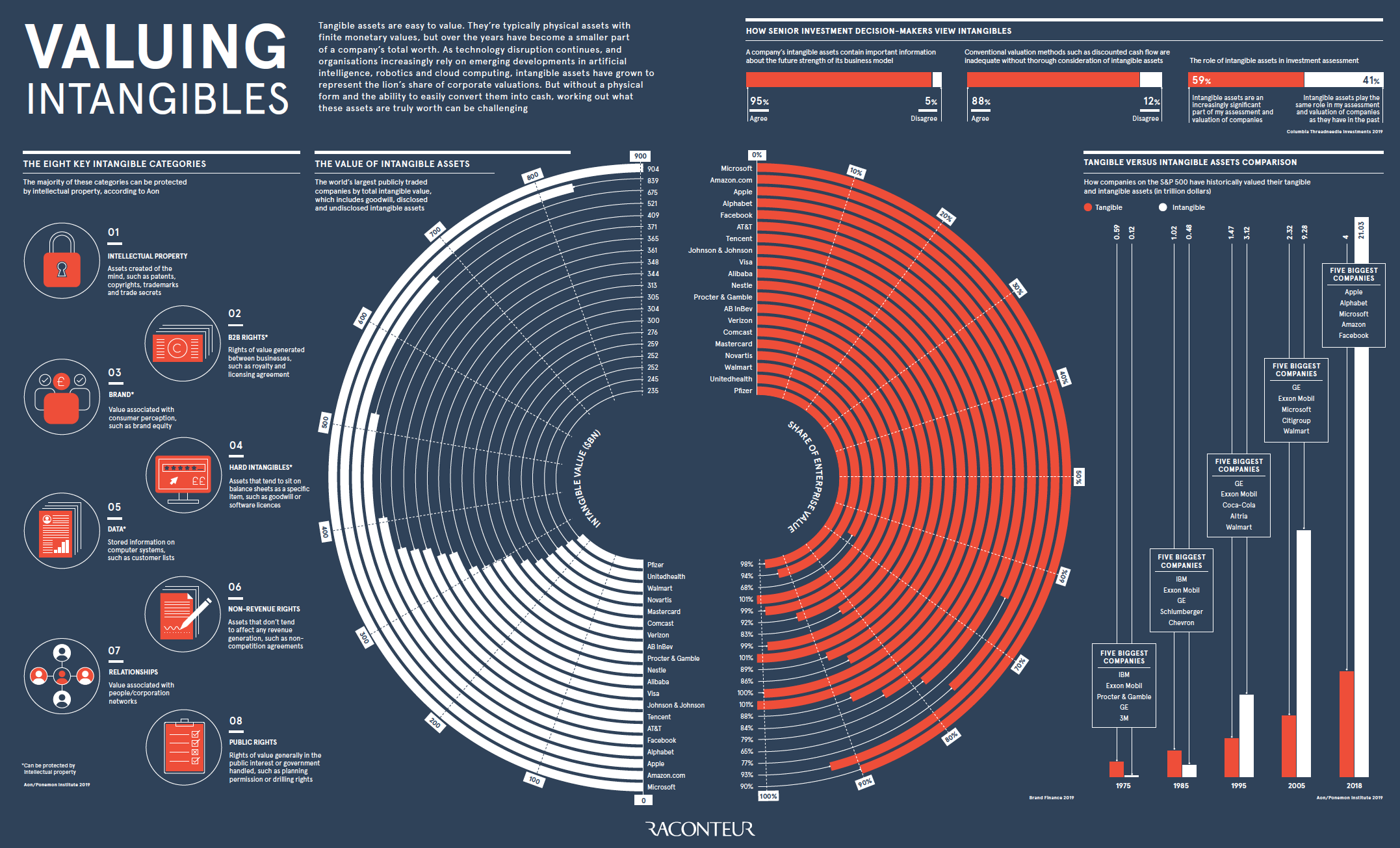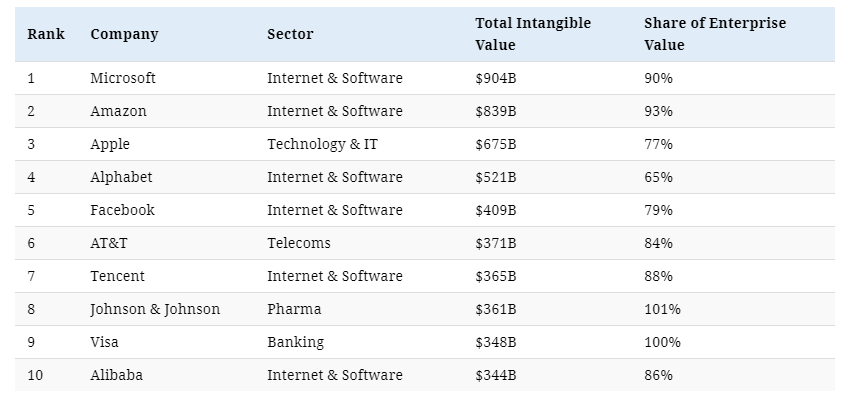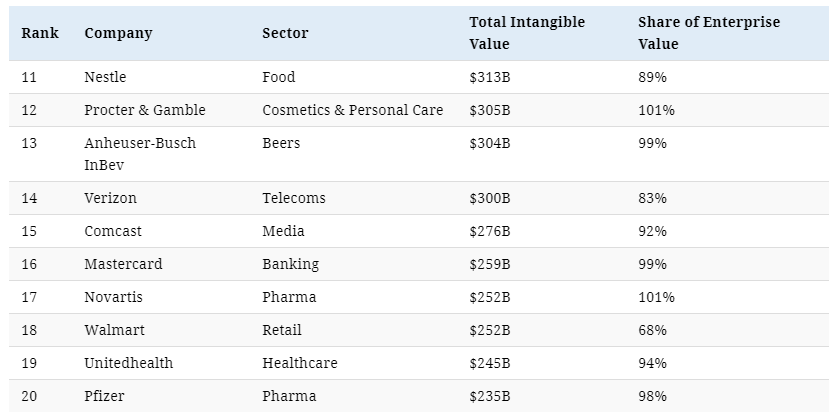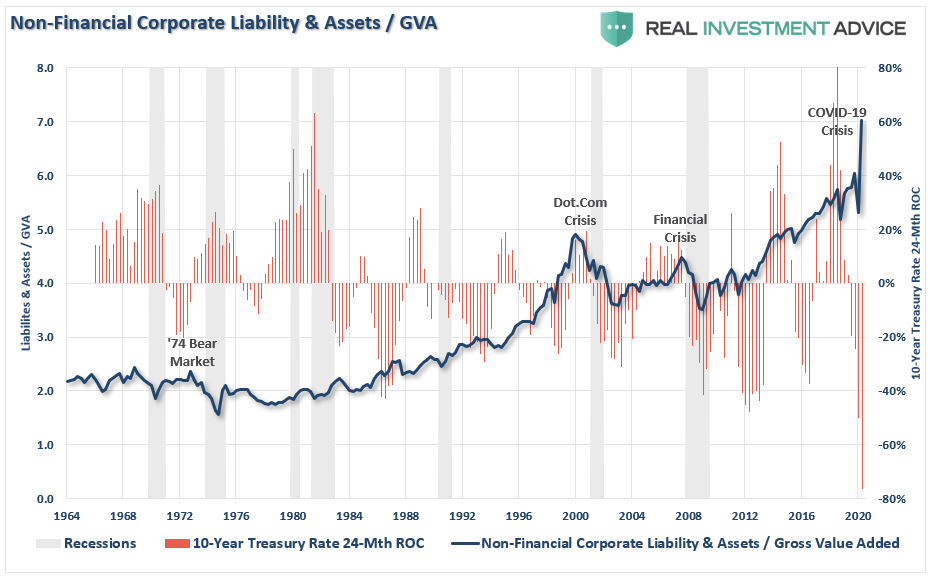by Lance Roberts, RIA
We have recently been discussing the lack of performance in value versus growth. Such is historically the case during the late-stage, exuberance-driven, bull markets. However, not everything classified as a “value stock” is necessarily a value. The problem today, more so than at any point previously, is the astonishing lack of value in “value.”
Be careful about what you are paying for. pic.twitter.com/P6wkg2kb4O
— Lance Roberts (@LanceRoberts) September 18, 2020
The chart is pretty stunning but needs some explanation.
The Problem With Book
Valuing a company is not a simple task. Every fundamental analyst uses different measures and adjustments to calculate a fair valuation. Importantly, there is no precise method, and each presents a different version with varying results. Such is why “value” investors often use several valuation methods in combination to gain a better perspective of the underlying business.
One such method of valuation is “book value.” Theoretically, book value represents the total amount a company is worth under a liquidation scenario. Such is the amount that the company’s creditors can expect to receive.
Book value analysis, and buying companies with low “price-to-book” ratios, has historically been a profitable venture. Companies with machinery, inventory, and equipment, and financial assets tend to have large book values. Significantly, these types of assets are easily valued and liquidated in the event of financial stress or bankruptcy.
However, today, as shown in the tweet above, such is no longer the case. With the rise in gaming, software, database, consultancies, etc., the increase in “intangible assets” has surged. Items such as patents, licenses, human capital, etc. now make up a significant portion of many company’s “value.” These types of assets are hard to value, and more difficult to liquidate. Such is especially the case with human capital, or a measure of the economic value of an employee’s skill set.
The Intangibility Of The Intangible
Here is the issue with intangible assets.
“Intangible assets are typically nonphysical assets used over the long-term. Intangible assets are often intellectual assets. Proper valuation and accounting of intangible assets are often problematic. Such is due in large part to how intangible assets are handled. The difficulty assigning value stems from the uncertainty of their future benefits. Also, the useful life of an intangible asset can be either identifiable or non-identifiable. Most intangible assets are long-term assets meaning they have a useful life of more than a year.” – Investopedia
Read the bolded sentence again.
In many cases, the value of intangible assets is often overly optimistic assumptions about the companies worth. The companies website, brand, software, permits, etc. may indeed have recognizable value today. However, in many cases, those values can change rapidly. Such is the case where there are few barriers to entry, rapid changes in consumer demand, or economic or political interference,
In other words, a company with large amounts of property, plant, and equipment has a greater definable value than one with large amounts of “human capital.”
Here is the entirety of the problem summed up nicely by Raconteur:
“Tangible assets are easy to value. They’re typically physical assets with finite monetary values, but over the years have become a smaller part of a company’s total worth. Technology disruption continues in artificial intelligence, robotics and cloud computing. As such, intangible assets have grown to represent the lion’s share of corporate valuations. But without a physical form and the ability to easily convert them into cash, working out what these assets are truly worth can be challenging.”
A Pervasive Problem
Just recently, Visual Capitalist prepared an infographic for Raconteur.
“In 2018, intangible assets for S&P 500 companies hit a record value of $21 trillion. These assets, which are not physical in nature and include things like intellectual property, have rapidly risen in importance compared to tangible assets like cash.”
Click To Enlarge
As shown, in recent years, the surge in intangible assets has become a larger share of enterprise value. The largest contributors to intangible assets are:
- Intellectual Property
- B2B Rights
- Brand
- Hard Intangibles Like “Goodwill”
- Data
- Non-Revenue Rights (Non-Compete Agreements)
- Relationships
- Public Rights
You should almost immediately grasp that while these assets may have “value” to the company, they may not hold much value during a liquidation process. Or rather, “one man’s riches are another man’s trash.”
The Evolution
“Intangibles used to play a much smaller role than they do now, with physical assets comprising the majority of value for most enterprise companies. However, an increasingly competitive and digital economy has placed the focus on things like intellectual property, as companies race to out-innovate one another.
To measure this historical shift, Aon and the Ponemon Institute analyzed the value of intangible and tangible assets over nearly four and a half decades on the S&P 500. Here’s how they stack up:” – Visual Capitalist
“In just 43 years, intangibles have evolved from a supporting asset into a major consideration for investors – today, they make up 84% of all enterprise value on the S&P 500, a massive increase from just 17% in 1975.
Digital-centric sectors, such as internet & software and technology & IT, are heavily reliant on intangible assets. Brand Finance, which produces an annual ranking of companies based on intangible value, has companies in these sectors taking the top five spots on the 2019 edition of their report.” – Visual Capitalist
While the issues of “intangibles” should undoubtedly be a concern for “value” investors, another issue further compounding the problem. Debt and accounting gimmicks.
A Compounded Problem
As discussed previously in “EBITDA Is Bull****,“ the heavy use of accounting gimmicks is obfuscating the real value of publicly traded companies. As noted:
“An in-depth study by Audit Analytics revealed that 97% of companies in the S&P 500 used non-GAAP financials in 2017, up from 59% in 1996, while the average number of different non-GAAP metrics used per filing rose from 2.35 to 7.45 over two decades.
This growing divergence between the earnings calculated according to accepted accounting principles, and the ‘earnings’ touted in press releases and analyst research reports, has put investors at a disadvantage of understanding exactly what they are paying for.”
Compound the problem accounting issues with surging levels of corporate debt, and the issue becomes more apparent.
Since the onset of the pandemic, the enterprise value to GVA (gross value added) ratio has surged.
Given the Federal Reserve’s monetary injections and suppression of interest rates, it is not surprising to see companies leveraging their balance sheets. As interest rates have plunged, corporations have hit a record issuance of debt to pay dividends and other non-productive purposes.
The increased leverage of corporate balance sheets is problematic, particularly given already weak revenue growth for S&P 500 companies.
Lack Of Disclosure
The debt, accounting gimmicks, and intangible assets make it increasingly difficult for investors to determine the actual “value” of the companies they are investing in.
Currently, given the speculative nature of the investing environment, such certainly seems to be an irrelevant problem. However, in the long-run, “value” always matters in the end.
The problem, when it comes to investors, is understanding and identifying these issues, particularly in the case of intangibles. As shown in the tables above, most investors are unaware that intangible assets make up such a large percentage of overall enterprise value.
When you combine that issue with the surge in corporate debt and level of debt relative to enterprise value, it is easy to visualize the risk investors are taking on.
Visual Capitalist’s conclusion is appropriate:
“The majority of intangibles are not reported on balance sheets because accounting standards do not recognize them until a transaction has occurred to support their value. While many accounting managers see this as a prudent measure to stop unsubstantiated asset values, it means that many highly valuable intangibles never appear in financial reporting. In fact, 34% of the total worth of the world’s publicly traded companies is made up of undisclosed value.
Brand Finance believes that companies should regularly value each intangible asset, including the key assumptions management made when deriving their value. This information would be extremely useful for managers, investors, and other stakeholders.”
Conclusion
Without better disclosures, a return to “mark-to-market” accounting practices, and tighter restrictions on “accounting gimmicks,” investors remain exposed to increased risks.
Of course, when executives’ compensation benefits from manipulating their earnings and speculative investors benefit during bull markets, you can understand why the rules won’t change.
That is, of course, until investors once again lose a majority of their invested wealth.
As Warren Buffett once quipped: “Price is what you pay, value is what you get.”
With a “lack of value” in value, just make sure you know what you are paying for.
Copyright © RIA






















